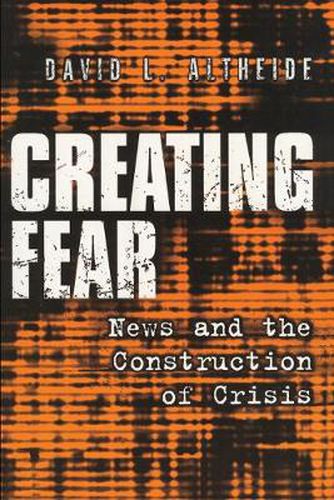Readings Newsletter
Become a Readings Member to make your shopping experience even easier.
Sign in or sign up for free!
You’re not far away from qualifying for FREE standard shipping within Australia
You’ve qualified for FREE standard shipping within Australia
The cart is loading…






The creative use of fear by news media and social control organizations has produced a discurse of fear - the awareness and expection that danger and risk are lurking everywhere. Case studies illustrates how certain organizations and social institutions benefit from the explotation of such fear construction. One social impact is a manipulated public empathy: We now have more victims than at any time in our prior history. Another, more troubling resutl is the role we have ceded to law enforcement and punishment: we turn ever more readily to the state and formal control to protect us from what we fear. This book attempts through the marshalling of significant data to interrupt that vicious cycle of fear discourse. David Altheide employs a method, which he calls tracking discourse , to map how the nature and the extent of the use of the word fear has changed since the 1980s; how the topics associated with fear, the topics of media discourse, have also changed over the same period (for example, the emphasis moves over time across AIDS, crime, immigrants, race, sexuality, schools, and children); and how certain news sources prevail over others, thus protectively insulating themselves from criticism of the premises of their discourse frames.
$9.00 standard shipping within Australia
FREE standard shipping within Australia for orders over $100.00
Express & International shipping calculated at checkout
The creative use of fear by news media and social control organizations has produced a discurse of fear - the awareness and expection that danger and risk are lurking everywhere. Case studies illustrates how certain organizations and social institutions benefit from the explotation of such fear construction. One social impact is a manipulated public empathy: We now have more victims than at any time in our prior history. Another, more troubling resutl is the role we have ceded to law enforcement and punishment: we turn ever more readily to the state and formal control to protect us from what we fear. This book attempts through the marshalling of significant data to interrupt that vicious cycle of fear discourse. David Altheide employs a method, which he calls tracking discourse , to map how the nature and the extent of the use of the word fear has changed since the 1980s; how the topics associated with fear, the topics of media discourse, have also changed over the same period (for example, the emphasis moves over time across AIDS, crime, immigrants, race, sexuality, schools, and children); and how certain news sources prevail over others, thus protectively insulating themselves from criticism of the premises of their discourse frames.